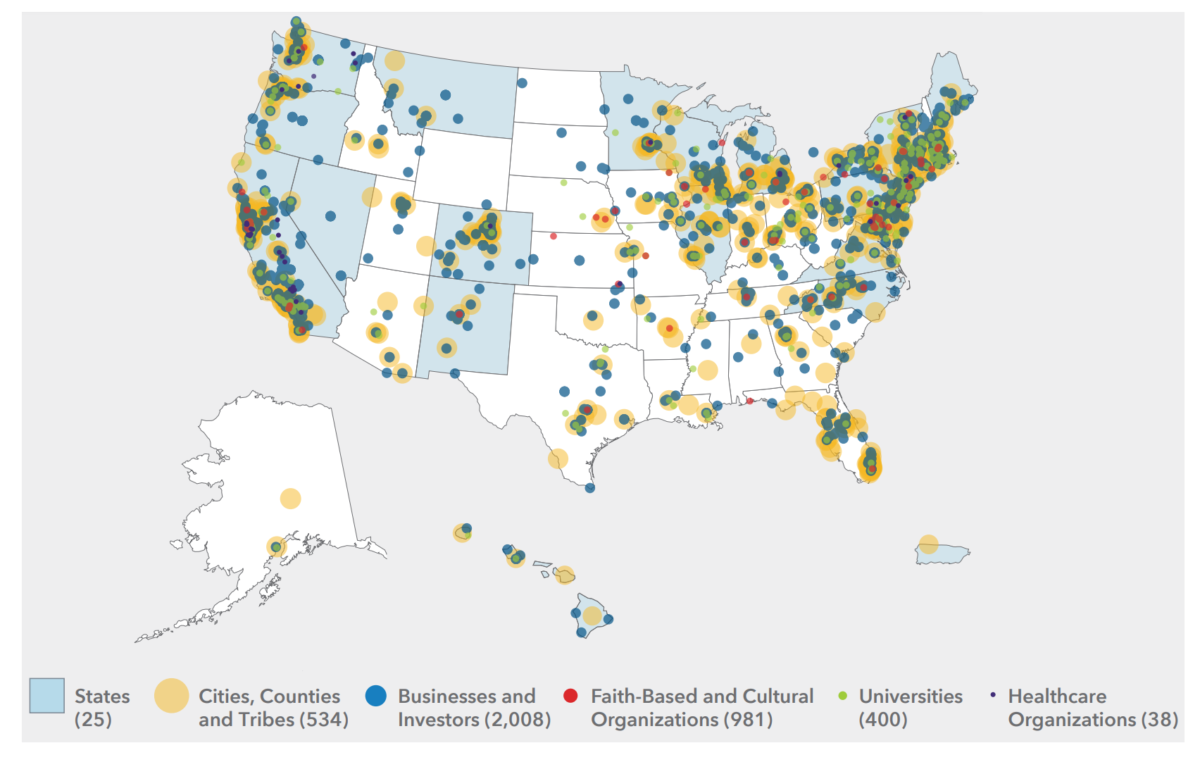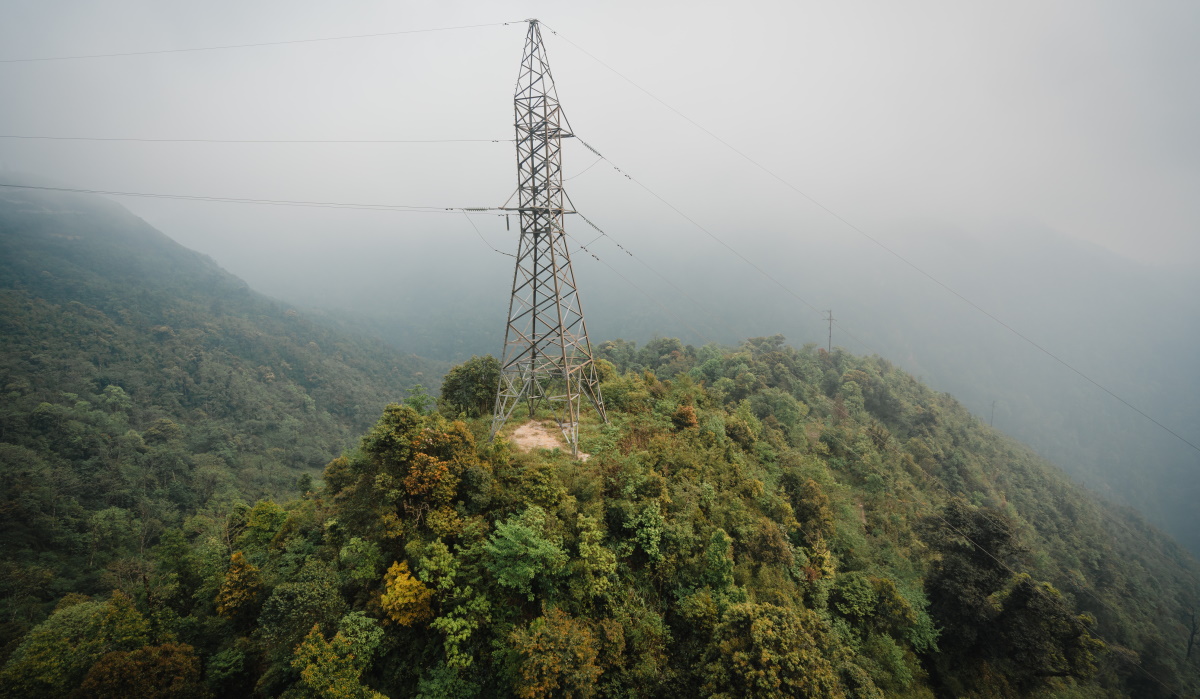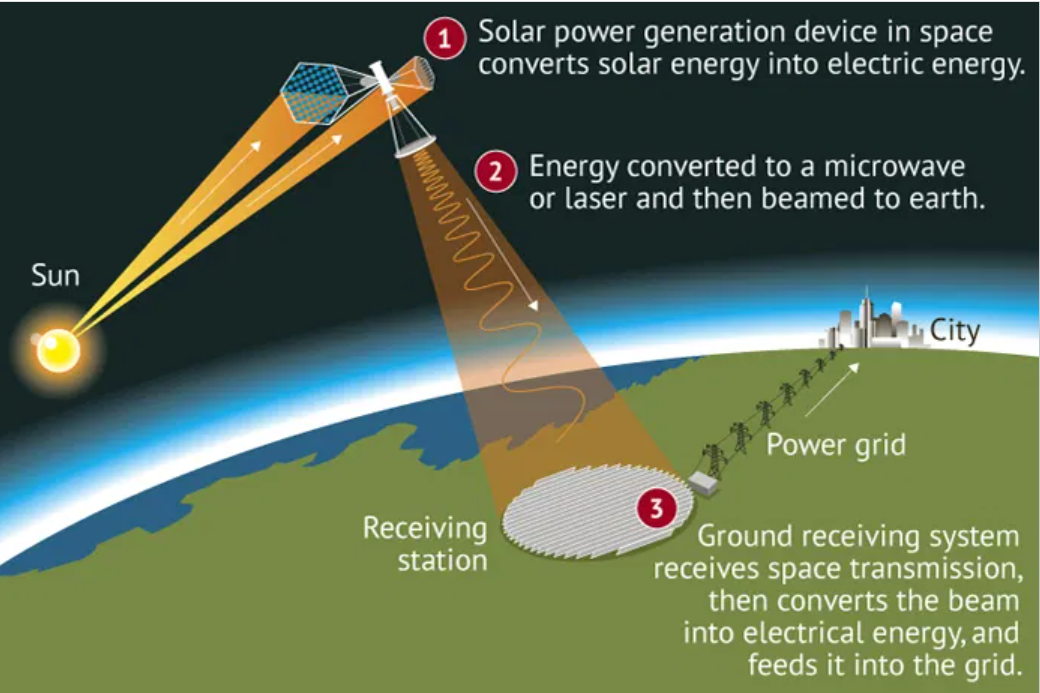November 2020: Earth observation, advising Oxford, Biden, NHS, diamonds and more
How can earth observation data help the energy transition?
 Delivering the clean energy revolution that we need, both quickly and successfully, requires people with different expertise and perspectives to come together to share knowledge and discover new approaches.
Delivering the clean energy revolution that we need, both quickly and successfully, requires people with different expertise and perspectives to come together to share knowledge and discover new approaches.
This is the approach taken by the British Association of Remote Sensing Companies (BARSC) for their next Online ‘Huddle’ meeting to be held on Friday 11 December, from 2-3:30pm.
This online meeting seeks to bring together individuals and organisations from the energy industry and the remote sensing and space sectors. So please join! The focus of the meeting is on the challenges to the energy industry and how Earth observation (EO) data can support the transition to renewable and low carbon energy.
There will be three speakers from the energy and Earth observation sectors:
Paul Massara will speak on challenges in the energy sector; whilst Lucy Kennedy of Spottitt and Christian Rossi from the Satellite Applications Catapult will discuss how the Earth observation sector is helping deliver useful and meaningful EO services to help with the energy transition.
The aim is to get members of the energy and remote sensing sectors together and spark some great conversation, new connections and collaborations.
You can register to get the joining instructions here.
Where to deploy cost-effective solar and wind farms in Africa?
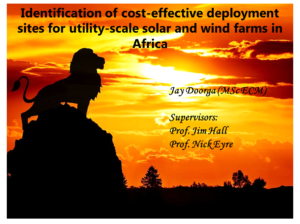 The rate of urbanisation of the African population is growing which (as on other continents) has implications for the future climate. Significant decarbonisation of the power sector is needed to prevent the lock-in to fossil-fuel based energy systems. Where are the best locations for large renewable energy systems, from both a technical and market perspective?
The rate of urbanisation of the African population is growing which (as on other continents) has implications for the future climate. Significant decarbonisation of the power sector is needed to prevent the lock-in to fossil-fuel based energy systems. Where are the best locations for large renewable energy systems, from both a technical and market perspective?
Jay Doorga has performed an in-depth study to identity cost-effective deployment sites for utility-scale solar and wind farms in countries across Africa. This research was undertaken for his MSc in Environmental Conservation and Management from the University of Oxford in 2020, for which he was awarded a distinction.
You can watch Jay presenting his work in this 10 minute video.
In his study, Jay developed a spatial power-sector decarbonisation model to identify optimum sites for wind and solar farm investments that would result in significant CO2 reductions per MWh of electricity generated. He incorporated legal, technical, environmental, institutional, political, socio-economic and investment risk factors to strategise solar PV and onshore wind farm investment planning.
Jay’s model and analyses revealed that Egypt offers propitious conditions for solar farm investments whilst South Africa provides favourable conditions for wind farm constructions. A finer scale analysis demonstrated that the construction of wind and solar farms in the optimum sites could result in cost-savings of 95.3% and 15.9% per MWh, respectively, as compared to building them in the low potential sites.
Re-joining the Paris Agreement
 The United States of America left the Paris accord on 4th November.
The United States of America left the Paris accord on 4th November.
Now that Biden and Harris have won the presidential election, we look forward to Biden enacting his promise to re-join the Paris accord on his first day in the office, which will be on 20 January. Scientists across the world are rejoicing at the end of four years of anti-science policies.
We can anticipate a renewal of his promise at the Climate Ambition Summit on the 12th December, which is being hosted by the UK.
Biden can re-join without needing to have the decision ratified by the American Senate. After notifying the United Nations, the US could be re-admitted just 30 days later. It would then need to submit an enhanced nationally determined contribution to the UNFCCC ahead of COP26 to have a full seat at the table.
In July 2020, Biden set out a progressive package of clean energy, green infrastructure, home retrofits, and electric vehicles, investing US$2 trillion to reach net-zero emissions by 2050. However the degree to which these ambitions can be realised depends on the balance of power in the Senate, and whether there is sufficient support from Republicans.
At the time of writing, with the vote still being counted, there is no overall majority in the Senate, with Republicans holding 48 seats compared to the 46 held by the Democrats, and 2 by other independents.
But what other activity is happening in America?
Lots! A groundswell of state and non-state actors are uniting for climate action, shifting away from fossil fuels and moving towards low-carbon alternatives.
In December 2019 Bloomberg released a report that sets out how bottom-up, transformative climate leadership playing out across America, with coalitions of states, cities, businesses, and others are already delivering climate action in support of the Paris Agreement. These coalitions are globally significant: they represent 68% of US GDP, 65% of the US population, and 51% of US emissions. These local policies lay the groundwork on which expanded national policies can be built, benefiting not only Americans but also global efforts to address climate change.
The report sets out achievement to date and looks ahead to 2030, assessing the potential outcomes from different scenarios to reduce emissions and curb warming to 1.5ºC. Common outcomes include America benefiting from new clean jobs, increased energy equity, and the transition of livelihoods away from fossil fuel dependency. It will also increase societal, environmental and health outcomes, by reducing air pollution, minimising future weather extreme events and disasters, halting the spread of vector borne diseases, and enabling cleaner water, air and habitats.
Above: the states, organisations and other actors supporting the Paris Agreement
NHS sets net-zero emissions target for 2040
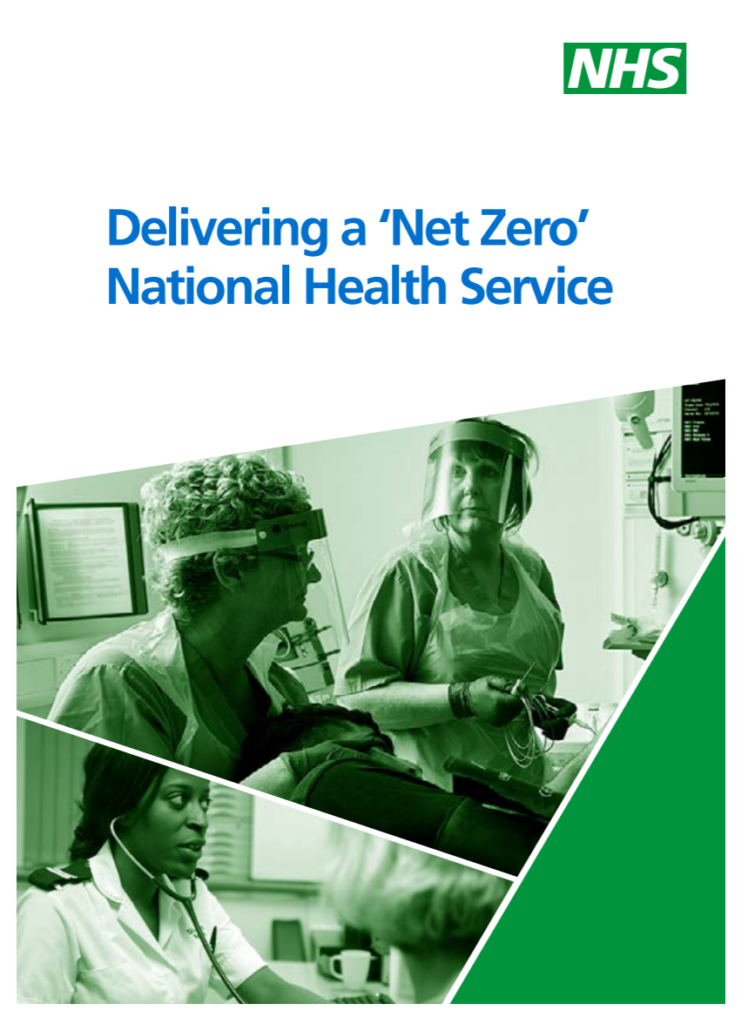 The NHS is considered to be the fifth largest employer in the world, coming after the US Defence, the Chinese Army, Walmart and MacDonald’s.
The NHS is considered to be the fifth largest employer in the world, coming after the US Defence, the Chinese Army, Walmart and MacDonald’s.
It is thought that NHS England is responsible for 5% of the UK’s carbon footprint, equivalent to the emissions of 11 coal-fired power stations.
It is significant therefore that on 1st October, the NHS became the world’s first national health system to commit to become carbon net zero, backed by clear deliverables and milestones. It has set itself two targets:
- reducing its directly controlling emissions (scope 1) to zero by 2040; and
- reducing emission from its 80,000 suppliers (scope 3) by 2045, a move that is backed by 98% of its 1.3 million staff.
A report from the NHS Net Zero Expert Panel sets out how the health service can contribute to nationwide carbon reduction efforts. To reach its targets the NHS must look across its entire operation from heat recovery to enabling staff to cycle to work: an immense challenge, and one which must remain in accordance with its NHS Long Term Plan.
It has made good progress to date as, compared to a 1990 baseline, its carbon footprint has been reduced by 62%, and its supply chain has been reduced by 26%.
Diamonds are forever
 Living sustainably now covers all aspects of life: including the bling on your finger.
Living sustainably now covers all aspects of life: including the bling on your finger.
Removing carbon from the atmosphere can be done in different ways from restoring habitats that sequester carbon (such as wetlands and forests), using timber in buildings, and storing it underground in secure geological formations.
Another way to extract carbon dioxide from the air, and permanently lock away the carbon is by creating artificial or laboratory diamonds. Such diamonds have become increasingly popular as people understand the social and environmental cost of mining for these precious stones, and choose not to support pollution, conflict and child labour.
The founder of UK renewable energy company Ecotricity, Dave Vince, has founded a company that has produced its first ‘Sky Diamonds’ from a facility in Gloucestershire, using carbon dioxide and rainwater.
The diamonds are created via chemical vapour deposition (CVD) which involves placing a seed or nuclei within a vacuum chamber that is filled with carbon rich gases, such as methane, and heated to nearly 800ºC. The gas turns into plasma from these extremely high temperatures, causing the release of carbon pieces which become layered onto the seed, growing the diamond. The carbon gradually bonds with the seed to create a diamond in about two weeks. These ethical diamonds are identical to, but created much more quickly than, those formed underground following billions of years of high pressure.
Dave Vince states that the methane needed will be created by extracting CO2 from the air and by splitting water to create hydrogen, powered by renewable energy. The carbon, environment and social footprint of the diamond will be zero.
News bites
 Oxford City Council’s first scientific advisor
Oxford City Council’s first scientific advisor
Co-director of the Integrate Programme, Professor Nick Eyre, has been appointed as Oxford City Council’s first scientific advisor.
Nick will support the Council and the city to tackle the climate emergency. In this voluntary and unsalaried role, Nick will offer the Council independent advice relating to its goal of tackling the climate emergency in Oxford. He will support the council in its future policy making, and will help to coordinate the strategy for the net-zero objectives for the city and the Council.
Following its declaration of a climate emergency in January 2019, and organising the Oxford Citizens Assembly on Climate Change later that year, the Council agreed to create a zero carbon plan for the Council and city. Nick has been appointed as the council acknowledged the need for expert advice on the science around the climate emergency, to have in-depth understanding of the challenges facing the Council, residents, and the community, and how best to respond.
Do you want to be kept in touch with news from Project LEO, and notified of ways in which you can get involved i.e. participate in exciting trials? Project LEO is one of the most ambitious, wide-ranging, innovative, and holistic smart grid trials ever conducted in the UK, and is exploring ways to create a smart local energy network for Oxfordshire, as an exemplar to other locations.
This means that the project, in an industry-first, will explore how growth in local renewables, electric vehicles, battery storage, vehicle-to-grid technology, and demand side response can be supported by a local, responsive electricity grid. The triple goal is reduced emissions, value for consumers, and opportunities for communities and market providers to provide clean energy.
You can sign up to stay connected and not miss any project news, and opportunities to attend webinars and workshops, or participate in trials.
Get fit while you charge!
The UK’s first electric forecourt to schedule to open very soon in Essex, with charging facilities for more than 30 cars at up to 350kW, with all car chargers represented: CCS, CHAdeMO, Type 2 and Tesla Superchargers. In addition, there will be the usual facilities expected at forecourts such as toilets, lounge areas with WIFI, and food and retail outlets, but there will also be an area for non-EV drivers to find out more. This is a great milestone! Owned by GRIDSERVE, the site also has solar PV and battery storage on site alongside the chargers, and the company is planning 100 more across the country over the next 5 years.
The best thing in my opinion is the partnership with the fitness company, SportsArt, to provide exercise bikes in an on-site gym, that will contribute to the energy supplied by converting the power generated by drivers, pedalling away while waiting for their cars, into electricity piped into the local power grid for charging the vehicles.
While the energy contributed may not be significant, it is a great symbolic pairing of how clean energy contributes towards healthy and more sustainable lifestyles. It’s also a really good way to understand energy loads, and how much power can be saved by being efficient: using an exercise bike for 1 hour is roughly the same as the energy required to boil a kettle!
If this inspires you, why not build your own bicycle generator for use at home?!
Government funding
The UK Government has awarded a first tranche of £7m funding to 20 projects from the £33m Future Flight Challenge pot. The support is targeted to ground-breaking aviation projects that will develop the ‘aviation technologies of the future’ that can cope with the challenges posed by issues from climate change to the coronavirus pandemic. The aim of the fund is to increase mobility, reduce reliance on road travel, and increase UK manufacturing opportunities. The successful projects range from unmanned drones to deliver medication, to developing hydrogen and electric aircraft.
From a separate pot, the £10m Automotive Transformation Fund, the Government has also supported 31 projects that help develop low carbon emission technologies for vehicles, such as state-of-the-art motors and high-performing batteries for electric vehicles.
And a further £29 million is being awarded to 6 projects through the government’s APC16 competition, with projects to collect and recycle electric vehicles and their batteries, to the upscaling of battery cell production in Scotland.
 An Energy Innovation Agency
An Energy Innovation Agency
At the Greater Manchester Green Summit (21-24 September) an announcement was made that an Energy Innovation Agency is to be created by three Greater Manchester universities, local government and SSE Enterprise, to kick-start a decade of clean energy innovation needed to meet the region’s 2038 carbon neutral target.
The vision for the Agency is to lead the transition to zero carbon society and economy by bridging the innovation gap, leading to an acceleration of emissions reductions, increased implementation of technological innovations and enhanced, forward-thinking policy agenda setting.
Dictionary corner: Externalities
 An externality is a cost or benefit caused by a producer, but which is not financially incurred or received by that producer. Traditional economics consider many aspects to be externalities and as such ignores them.
An externality is a cost or benefit caused by a producer, but which is not financially incurred or received by that producer. Traditional economics consider many aspects to be externalities and as such ignores them.
There can be positive and negative externalities. A classic negative example is pollution; many consider humanity’s biggest negative externality to be the release of greenhouse gas emissions that cause climate change.
The economic transactions and activities that contributed to climate change carry little cost for individual actors but have wider and global consequences that range from the very costly to the potentially catastrophic, and can adversely impact current and future generations through degraded environments, exposer to unstable and extreme weather events, and loss of livelihoods through floods, droughts, and extreme temperatures.
John Rhys, comments that:
“The torrent of interlinked challenges facing us, from climate change to oceans to antibiotic resistance, all have at their core some form of fundamental market failure – mainly failures to address externalities. All imply national and international interventions on a substantial scale.
Despite the near universal acceptance of this huge failure to address this externality, there is currently no consistent or universal way to reflect climate costs back into individual and national choices and decision making.
The global reach and impact of climate change makes implementation policy difficult as mitigation and adaptation measures as international unity is essential. With the change in government in America, the outlook looks more hopeful than it was.


